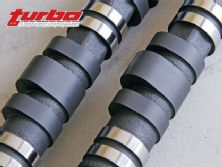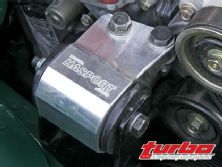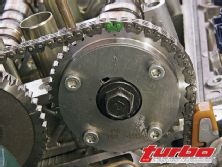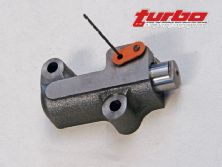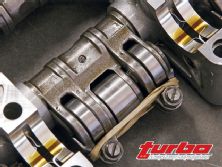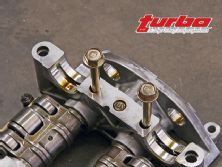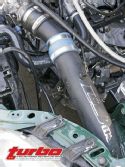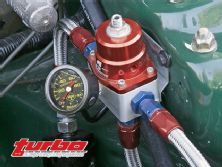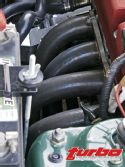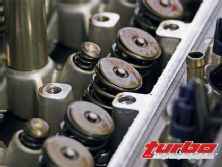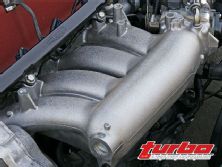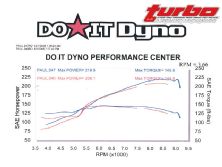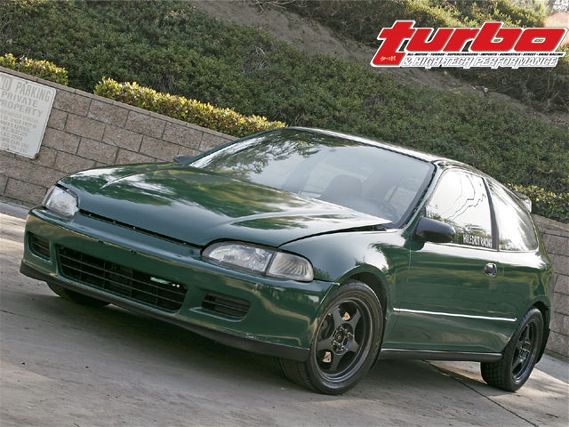 | Honda Civic - Web Cam K20A/K20Z Camshafts Test
| Honda Civic - Web Cam K20A/K20Z Camshafts Test
We seem to always get the short end of the stick. Us Americans. At least when it comes to the auto world. Not to sound ungrateful, we like it here. This whole democracy thing seems to be working out nicely. And there are few climates like Southern California's where you can hop on a snowboard and a surfboard in the same weekend. Also, there aren't many places on the map where someone can turn their hobby of automotive overindulgence into a weekly paycheck.
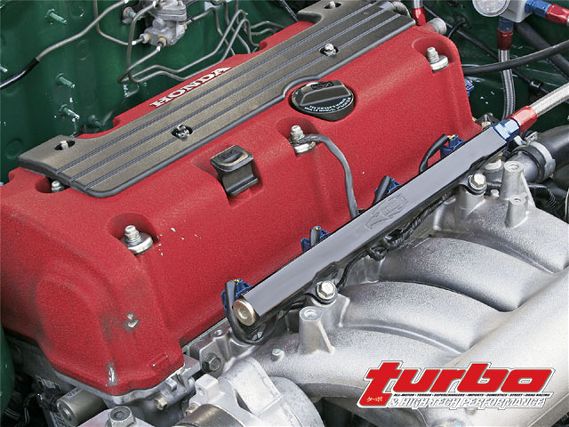 | Honda Civic - Web Cam K20A/K20Z Camshafts Test
| Honda Civic - Web Cam K20A/K20Z Camshafts Test
Still, we're getting the short end of the stick. American Honda has constantly schemed up ways to keep U.S. Honda enthusiasts loyal to the brand by means of flashy Civic, Integra and RSX re-badging techniques accompanied by a few key powertrain accouterments-like the Si, the GS-R, the Type S-without ever giving us the real deal. The truth is, all that any faithful Honda loyalist wants is a Type R.
Until Honda brings over a Type R-which may likely be never-Honda enthusiasts may forever be forced to build their own, which they've been doing for some time. Since the B-series Type R powerplant was first introduced in Japan more than ten years ago, resourceful Americans have found ways to bring them over and transplant them into lesser models that Honda never offered them in. Honda's latest Type R, the Japanese-spec Integra's K20A, has already found itself stateside, in abundance. Despite the cost of performing such an engine transplant-upwards of $7000 for the do-it-yourselfer-they keep coming. In stock trim the K20A produces 220 hp at the flywheel. That's a 20hp jump in comparison to the top of the line, U.S.-spec RSX Type S. It's no wonder Honda loyalists continue seeking out Type R fame.
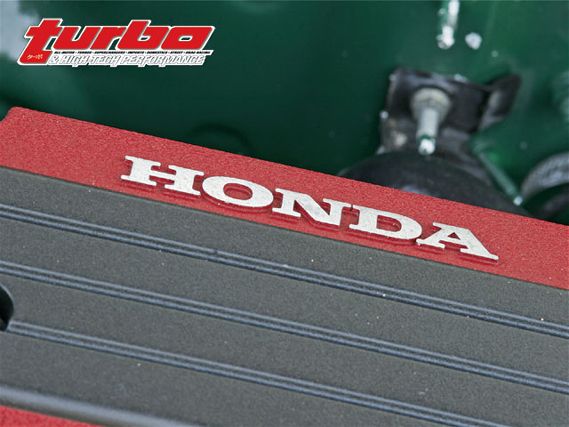 | Honda Civic - Web Cam K20A/K20Z Camshafts Test
| Honda Civic - Web Cam K20A/K20Z Camshafts Test
The Type R's upper echelon of performance, when compared to other K engines, is reached through marginally higher compression pistons; higher lift, longer duration camshafts, and a slightly different valvetrain among other things. As such, realizing additional power through modifying the Type R powerplant can often prove a big waste of time unless you really know what you're doing; and that's because those at Honda behind the Type R really knew what they were doing. How do you improve upon what Honda has gone to such great lengths to make perfect, with success? How do you make the gearbox, camshafts and valvetrain better, all of which were designed by the engineers at Honda with one thing in mind: to make hardcore Honda enthusiasts happy (at least those not in the U.S.)? It's difficult. When it came to the B-series, few manufacturers were able to produce camshafts that would better the Type R's in a naturally aspirated, street configuration. The K-series Type R is still relatively new, but Web Cam has already introduced a set of camshafts that are proven to better the Type R's by a sizeable margin. We have proof.
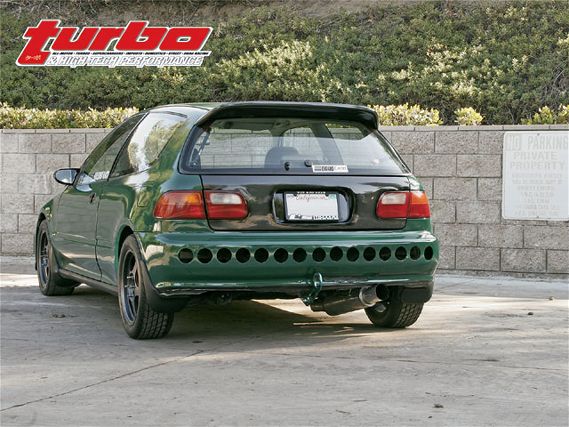 | Honda Civic - Web Cam K20A/K20Z Camshafts Test
| Honda Civic - Web Cam K20A/K20Z Camshafts Test
When we were first given word by the guys at Holeshot Racing that Web Cam was going to be making K20A camshafts, we figured they'd be somewhat similar to the K20A Type R's. It made sense. And that would have been okay. Really. OEM Type R cams aren't exactly cheap, so if somebody like Web Cam stepped up to make something similar, and sold it for less, well, that would have been a good thing for RSX Type S and Civic Si owners. But that wasn't the case. Prior to strapping our test Civic to Do It Dyno Performance Center's Dynamometer, we prepared ourselves for the worst, or at best something Type R-like. After all, it's not exactly easy to improve upon Type R technology. The results surprised us. The Web camshafts bettered the Type R's across the board and by more than 11 hp. Torque values are also up, especially on the primary cam lobes and then when VTEC is activated, which, incidentally, is much smoother with the Web cams. That's right. There's newfound power and torque even when the engine is subjected to the primary cam lobes-before VTEC, which is good, seeing as how that's where this K series spends most of its time as a daily tool. Once Honda's infamous third-lobe cam timing begins its magic just after 5000 rpm, it's all over. Well, actually it's just beginning. It's here where the power curve turns the way we want it to and keeps going. Literally. We stopped at 9200 rpm, but everything tells us these cams want to keep producing more power. Fortunately for this particular K20A, the owner of our test Civic, and those tuning it for that matter, aren't stupid, as those kind of engine speeds on a relatively stock engine are enough to make our skin crawl.
Our test Civic was already producing decent horsepower figures: 208 to the wheels and more than 144 lb-ft of torque. The engine modification list thus far is requisite but short despite the power being made; it includes a four-into-one header, Civic Si intake manifold, Hondata K-Pro, Aeromotive adjustable fuel pressure regulator, a make-shift cold air intake, and a 2.5-inch crush-bent exhaust system. In order to take advantage of the Web camshafts' more aggressive nature, and per their recommendation, Supertech valve springs and titanium retainers were put into place. Like we said, this K20A regularly visits engine speeds past 9000 rpm, despite warnings from others. As you might expect, the factory steel valve retainers have already experienced more than their fair share of abuse and it only made sense to replace them with more durable titanium pieces. As for the valve springs, there was no question as to whether or not to replace these. In order to avoid valve float, coil bind and possible engine damage from excessive engine speeds, the stiffer Supertech dual springs were swapped in place. Once the Web cams were in, Do It Dyno's Carlos Ochoa and Harvey Janisse of Holeshot Racing dialed in the K-Pro to fine tune camshaft phasing and fuel delivery. A short time later and our test Civic was up an extra 11 horses. Hmm ... 11 extra horsepower. Somehow the short end of the stick doesn't seem so short anymore.

